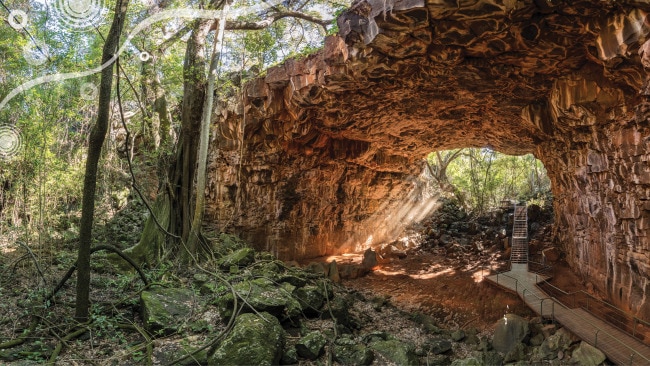Why walking is the most underrated exercise
OK yes, running is technically better for you than walking. However, if you hate running so much you never leave the couch, it’s no good for you at all.

OK yes, running is technically better for you than walking. However, if you hate running so much you never leave the couch, it’s no good for you at all.
It’s arguably the most underrated form of exercise - free, easy, low-impact, enjoyable - and it has real health benefits. For example, an article published last year by Harvard Medical School in the United States indicates that walking improves cardiac risk factors such as high cholesterol, blood pressure, diabetes, obesity, and inflammation. It’s good for your mind, too. Another US-based study even found walking could increase a person’s creative output by up to 60 per cent.
It’s never been more important to incorporate movement into your day. Research from the federal Department of Health indicates that nearly 70 per cent of Australian adults (almost 12 million people) are either sedentary or have low levels of activity. We spend more time than ever before sitting at desks, sitting in cars, and sitting on couches. It shows on the scales: according to the Australian Institute of Health and Welfare, nearly two thirds of Australian adults are overweight or obese.
Something is better than nothing
According to Amanda Rattay, a Melbourne-based personal trainer with 12 years of experience in the industry, walking is often the first thing she’ll recommend to someone trying to turn things around.
“I work with a lot of parents who have tried to lose weight or get fit many times before but struggle to stick with it and end up reverting back to old habits,” she tells the Herald Sun.
“Instead of trying to force them to follow a strict diet, or commit to an unrealistic amount of sessions at the gym, I’ll encourage them to go for a walk after dinner with the kids. Take a walk to the shop or local library. For the office workers, I suggest a quick walk at lunch to help reduce stress and get some fresh air.”
She says the trouble is that many of us believe that walking isn’t enough, so we end up sitting on the couch and not doing anything at all.
“The reality is doing something small like going for a walk around the block is going to be [much] better for you than sitting on the couch.”
The best thing is that you can go at your own pace and build up your fitness over time.
Helping us live better lives
Our lack of movement is endemic. There is a growing trend among workplaces to include things like gym memberships and mental health services to make us happier and more productive.
Meanwhile, the government has launched a number of health campaigns targeted at different factions of the community, designed to make us healthier and reduce the impact on the healthcare system.
However, there is another sector also helping us to live better lives: residential development.
Take Woodlea, for example. It’s a new suburb in Melbourne’s west, and it’s been deliberately planned to include sporting and recreational facilities as well as parks and shared walking and cycling paths. About 30 per cent of its area is dedicated to open space.
“As a well-connected community, residents have everything they need just a short stroll away, whether it be in the soon-to-be-built Town Centre or walking the children to the newly-opened Bacchus Marsh Primary School, movement becomes a part of everyday life,” says Woodlea project director Matthew Dean.
“As part of our commitment to become Australia’s healthiest community, our master-planned community is very strategic. Each home is located within a 200-metre walk to a part that promotes active play and a state-of-the-art sporting precinct that is home to two ovals, 10 tennis courts and a basketball half-court.
“Residents also have easy access to eating wholesome food with a community garden flourishing with fresh fruit and vegetables, ripe for their choosing.”
Environment has a big impact
Suburban environments will be a key factor for Melbourne’s health and happiness moving forward. Last month, the Victorian Government announced plans to release 12 new suburbs around Melbourne to boost supply and keep prices low. The allotments will accommodate some 50,000 new homes.
Experts from the RMIT Centre for Urban Research say there are a number of key elements that should be in place to help residents flourish in these growth areas.
For example, it’s crucial for housing to accommodate various family structures and living situations, and it’s really important that the new suburbs have access to public transport infrastructure like train lines. New suburbs also frequently include a push for active transport like walking, with well-connected streets and a variety of local destinations like shops within close proximity.
Along with promoting health benefits, researchers say pedestrian-friendly environments tend to make places more interesting and attractive, along with green spaces and open public areas.
As such, healthy suburbs of the future will have a carefully-selected mix of everything from homes to jobs, schools, shops, community services - and, of course, plenty of space to walk.
Originally published as Why walking is the most underrated exercise


